Why I came to Japan is a frequently asked question. Self-promotion is an unspoken response. I wanted to try modeling. Only in Tokyo does any Western geek off the street have the potential to grace subway advertisements for suits or sports drinks. Western actors pop up in Japanese commercials and as extras on game shows, as objects of desire in the former, and of ridicule in the latter.
With a proper visa, fame was mine for the making. Here, my looks have been likened to Tom Cruise, Keanu Reeves, Ross from “Friends,” Brandon from “90210,” and Formula One’s Michael Schumacher. Then again, until recently the Japanese didn’t have a word for green, and continue to say blue traffic light and blue apple. Thus, their visual assessments are to be taken with a grain of shio and some sake.
Eager to test the market, I registered with casting and modeling agencies for television, film, commercials, and print work. Agency names ranged from insipid (Japan Fashion Model Center) to nonsensical (Ooh Planning) to tawdry (Hot Kicks Dance Agency & Tu Tu Telegram) to mysterious (Prestige Inc., Creamy Division) to mysteriously threatening (Land Mazi).
Registration required planning on the level of a military invasion. Some agencies only processed new talent during certain hours of certain days. Others required advance appointments. All were scattered around town, hidden on nameless side streets or alleyways. Even the most prominent agencies had offices smaller and more unassuming than a New York pizza parlor. To locate them, I struggled with typically vague Tokyo directions.
I was nervous. I didn’t have a portfolio. Would I be shown the door before I could pay the registration fee? Prior experience was limited to a sportswear shoot for a Korean magazine while in Guam.  I also claimed fame to gracing the cover of a leading automotive magazine. In reality, however, the free promotional Jeep picture (below) was taken while on a lunch break in New York City. Can you spot the brown bag?
I also claimed fame to gracing the cover of a leading automotive magazine. In reality, however, the free promotional Jeep picture (below) was taken while on a lunch break in New York City. Can you spot the brown bag?
I geared up for my first two agencies, Excite and Apex. Aware that snapshots would be taken, I wore a blue and white striped Abercrombie polo and tight Diesel jeans. For footwear, it had to be the Pumas. I strode off with one white on blue sneaker, and one blue on white sneaker, perfectly matching my polo.
No more second-guessing myself – it was show time. Outside humidity cooked up beads of sweat that soaked my back. I shrugged off subway stares, all of which landed at my fashionably mixed feet.
On a tiny street lined with expensive cars, I located Excite’s office in the Maison de Rose building. I rang the bell. “Hai!” echoed from inside. Huh? Barge in, or wait for someone to open the door? I rang again. “HAIIII!” I barged in. My experiment in footwear design was immediately neutralized. I checked my Pumas at the door, and slid into oversized slippers. Four young workers hacked away silently in the one-room office. I filled out a form and left in search of Apex.
Other agencies proved more receptive. I walked into Hollywood Models, and Jun stared as if I had walked out of an Esquire spread. Such awe rarely occurs, but when it does I can spot it in the focused eyes and suppressed grin. I smiled back at her exotic looks, which I judged to be a Japanese mix. While she took my measurements, we argued about the color of her brown hair. Jun discredited herself by also calling my brown hair black. I wanted to ask if I could have a bite of her blue apple. 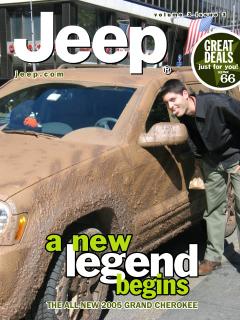
Carrie, while not in awe, was friendly and fluent. She studied music at Northern Texas University. She added that she was not a fan of Bush, nor were her “dope-smoking” college friends. We found further common ground in our love for baseball, and talked about A-Rod, a former Texas Ranger. I invited her to a Yakult Swallows game for which I had just purchased a ticket at Jingu Stadium down the road.
That gave me the idea to invite Jun, too, but she only followed MLB. Unable to recall her favorite team, she admitted to only liking one player. On the Mets…he’s black. I dropped names until outfielder Mike Cameron struck a cord: “he’s very attractive.”
At Future Talent, the atmosphere was electric. Manager Marilyn waived me inside. She mothered talents through a headset. “If you get the job, it’s more than ¥200,000 ($1,900)…try honey, try. If you don’t try, you won’t get anything.” To another she encouraged, “Oh honey, I just know you are going to get the job.” She ended one call with, “Stay out of the sun – it’s hot today. Love you, bye-bye.”
Business was booming. Marilyn fused three languages during a single call. In demand were a young father type, “wild girls,” and sporty looks – athletic skill not required. “Audition October one. Shooting six, seven. Please call me back if you can make it.” Marilyn was glued to the headset the whole time; an assistant fed me orange juice and took my measurements. I learned I have nice round hips (100 cm.).
Over two humid August weeks I registered with 13 agencies. I’ve since memorized my bust size, trouser inseam, and sleeve length in centimeters. Would the running around pay off? It took less than a week to get my first audition call…[to be continued].
Monday, August 29, 2005
I’m Gonna Be A Supermodel
Posted by
ジェフリー
at
8:30 AM
2
comments
![]()
Labels: Modeling
Thursday, August 25, 2005
A Typhoon By Any Other Name
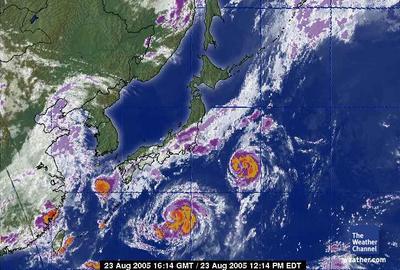 Merely mention the word, and my spine tingles. After surviving the fury of super-typhoon Pongsona in Guam in 2002, I am well aware of the catastrophic potential of such storms. As the news article states, a bumper crop of 10 typhoons slammed Japan last year, which is about seven or eight more than average.
Merely mention the word, and my spine tingles. After surviving the fury of super-typhoon Pongsona in Guam in 2002, I am well aware of the catastrophic potential of such storms. As the news article states, a bumper crop of 10 typhoons slammed Japan last year, which is about seven or eight more than average.
Thus, I heeded warnings about Mawar, which means “rose” in Malaysian. I braved buckets of morning rain to stock up on essentials, namely sushi and Häagen-Dazs. A female voice cried out from the afternoon raindrops; crackling echoed over the emergency PA system. She spoke slowly and calmly, but all I understood was “please,” “this is,” “typhoon,” and “Koto-ku” – the ward I call home. More informative was her stern undertone of caution. Now, did she mention anything about filling up the bathtub in case of a power outage?
Instead of remaining housebound, I strapped on Tevas and rolled up my wind pants to attend my first freelance writers’ meeting for Japanzine, which is publishing a variation of my earthquake blog for its September issue. By speaking in nouns to a platform attendant, I confirmed the following: Konban. Taifu. Chikatetsu. Mondai nai? Nan-ji ni shimari masu ka? (Tonight. Typhoon. Subway. No problem? What time do you close?)
In Tokyo, typhoon Mawar proved to be just a two-day rainstorm. Japan’s elegant umbrella etiquette enables me to enjoy such rainy days. Drizzle or downpour, kasa smoothly pop open to ward off wetness. Plastic sheaths greet customers at shop entrances. Umbrella culture also condones swapping, which initially I mistook for stealing. Tonight someone at our Canadian pub meeting place swiped my umbrella. Of all nights, just my luck, I moaned while peering through streaked glass. Worry not, a fellow writer advised, as I reluctantly helped myself to a replacement from those remaining.
On the way home, I splashed through the empty streets with my newfound guardian, which like its predecessor is clear plastic with a white J-shaped handle. They don’t come any cheaper. Streetlights illuminated driving sheets of rain. The wind was picking up. I danced across a bridge over a swollen canal, reminiscent of a Hiroshige print, Shower at Ohashi Bridge. Tokyo in the typhoon was mine for the taking.
Posted by
ジェフリー
at
2:30 PM
0
comments
![]()
Labels: Tokyo
Monday, August 22, 2005
Next Stop…Kachidoki
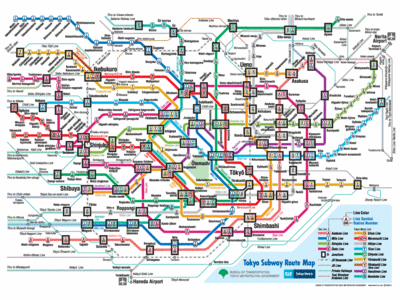 5.69 million passengers on an average day. 168 stations. 114 miles of tracks. 9 lines. And that’s just the Tokyo Metro system. Four private Toei subway lines and about 30 above ground Japan Rail (JR) East lines also crisscross greater Tokyo. There isn’t enough room on one map to depict them all.
5.69 million passengers on an average day. 168 stations. 114 miles of tracks. 9 lines. And that’s just the Tokyo Metro system. Four private Toei subway lines and about 30 above ground Japan Rail (JR) East lines also crisscross greater Tokyo. There isn’t enough room on one map to depict them all.
When I’m asked about my favorite Japanese words, I rattle off subway stops to surprised reactions. “I never thought about the names before. They are just station names,” one local girl told me. Well, so is 51st Street, or Brooklyn's Avenue X. Unlike their New York City counterparts, however, Japanese names naturally roll off the tongue, begging to be repeated for sheer linguistic enjoyment, which I do to puzzled looks from fellow commuters.
I’m partial to stations starting with “K,” “O,” or on the Chiyoda Line. Here are my Top 10. Can you find and pronounce them all on the map above? Click on it to enlarge. 10.Kayabacho 9.Sumiyoshi 8. Ochanomizu 7.Kasumigaseki 6. Higashi-nihombashi 5.Okachimachi 4.Kita-senju 3.Nogizaka 2.Kiyosumi-shirakawa 1.Kachidoki
10.Kayabacho 9.Sumiyoshi 8. Ochanomizu 7.Kasumigaseki 6. Higashi-nihombashi 5.Okachimachi 4.Kita-senju 3.Nogizaka 2.Kiyosumi-shirakawa 1.Kachidoki
Posted by
ジェフリー
at
8:20 AM
1 comments
![]()
Labels: Tokyo, transportation
Monday, August 15, 2005
Dancing Silhouettes
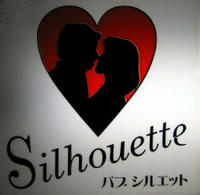 …Continued from previous entry.
…Continued from previous entry.
“Where are we going?” I wondered aloud. I use this alley to access the side entrance of the supermarket. Nothing special ever stood out among these now darkened restaurants. “Third floor. I’ll show you,” Jerry said with a wink. The sign read: Silhouette. My mind translated: hostess bar.
Fingertips tingled as elevator doors opened. Jerry guided me into uncharted territory. A Filipino woman in a kimono spun around. I gawked back at her. What non-Japanese woman dresses in a kimono? Apparently one who makes a lot more money than I do wearing a suit and tie in a classroom.
¥4000/hour ($38) buys a  table with a hostess pouring unlimited watered-down Suntory whisky. Karaoke and flattering conversation are also included. That Jerry was still in a generous mood made this an even merrier occasion. On a teacher’s salary I could afford about 15 minutes of this “debauchery.”
table with a hostess pouring unlimited watered-down Suntory whisky. Karaoke and flattering conversation are also included. That Jerry was still in a generous mood made this an even merrier occasion. On a teacher’s salary I could afford about 15 minutes of this “debauchery.”
Heads turned towards the odd couple. Two white men – one middle-aged, paunchy, and with a shaved head and his young sidekick – needed pairing up. Sensing a covetous look in their stares, my self-consciousness waned at feeling out of place. Bored with the routine of chatting up drunken Japanese salarymen, these women viewed us as objects of fresh conversation, and perhaps ones who could relate to being outsiders in Japan.
Although whisky ranks just above embalming fluid on my preferred drink list, it was the only beverage included in the set price. Fortunately, it was  watered down enough to suppress my gag reflex. Monica (her stage name – she has a day job reputation to maintain) plunked ice cubes with grace. “Do you want something to drink, too?” I offered. That wasn’t included either, but Monica didn’t seem disappointed. On her next rotation in 20 minutes a new client would buy her a drink she didn’t want.
watered down enough to suppress my gag reflex. Monica (her stage name – she has a day job reputation to maintain) plunked ice cubes with grace. “Do you want something to drink, too?” I offered. That wasn’t included either, but Monica didn’t seem disappointed. On her next rotation in 20 minutes a new client would buy her a drink she didn’t want.
These Filipinos spoke better English than every Japanese person I’ve met, and were far more complimentary. “Your high nose is perfect!” Monica lied. They are paid to dispense alcohol and advice, and listen to you ramble about your wealth, power, lackluster sex life, problems at work, or headaches at home, where your family soundly sleeps while you flirt late into the night.
These professional are also paid to sing karaoke. In practice, however, Sindy, 19, stood silently beside me. Unbelievably, for three months in Japan, I had yet to try karaoke. In fact, I had never sung aloud before, except privately in the shower or in gridlock on the Merritt Parkway. In my first live performance, I belted out all the wrong songs, which were either beyond my octave range (Stacie Orrico’s “There’s Gotta Be More To Life") or didn’t really have lyrics (Daft Punk’s “One More Time”).
I learned my lesson. On a follow-up visit two weeks later with a treating Japanese businessman I met at Daruma restaurant, I entertained with a tone-deaf performance of Bon Jovi’s “Livin’ On A Prayer.” A wave of patriotism swelled up inside as let everyone know that, like Bruce Springsteen, I, too, was “Born In The USA.” A little more practice, and I’m sending a demo tape to American Idol.
Salarymen sat in dark corners in darker suits numbing their minds with whisky. An American half their age sang on stage in track pants, t-shirt, 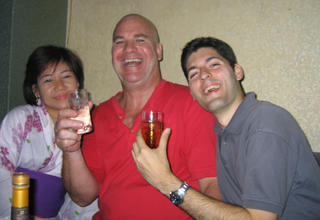 and Tevas. The owner, with hands in his hair, calculated what effect I would have on future business. Was I an amusing novelty or irritation to his clientele? Or would nobody remember a damn thing the next morning anyway?
and Tevas. The owner, with hands in his hair, calculated what effect I would have on future business. Was I an amusing novelty or irritation to his clientele? Or would nobody remember a damn thing the next morning anyway?
I was beginning to forget myself. Monica slipped me a ¥1000 bill and whispered something in my ear, which promptly went out the other. How was I getting tips in a hostess bar? The next thing I knew I was dancing with other men’s paid companions. And then with the men themselves. A girl half my size kept coming over for scandalous hip shaking. She was Japanese, which made her someone’s girlfriend, not a hostess. Was I going to get jumped in the alley on the way home?
Freestyle dance ended and Céline Dion began. “That’s our song!” I grabbed Sindy and rushed to the television screen’s scrolling lyrics. I ripped the microphone cord from its taped position and riled up the audience who had stuck around for the 3 a.m. closing. I poured my heart into the song until I couldn’t go on anymore. During the last verse, I dropped to my knees, flailed my arms, and dragged out the final refrain. Céline herself would have been proud.
Like Daruma earlier that night, Jerry and I closed down Silhouette. Outside in the alley, I happened upon my midget dancing partner. She was sitting with her not-so-miniature yakuza boyfriend. Would dance floor antics come back to haunt me? I casually joined them on the curb in the shadows of the supermarket.
They didn’t speak English, but after enough Japanese whisky I was fluent in their tongue. I think they said they were going to drink more at another bar, but at 3 a.m. on Tuesday they must have been headed home. “Ja mata,” I chirped as we parted in opposite directions along deserted Kiyosumi-dori.
I woke up with a bruised tailbone. My mouth tasted like Suntory. “My Heart Will Go On” looped around in my head. Since when did I drink whisky and like Céline Dion? Never again I told myself, crawling into my sandals to make an emergency run to McDonald’s. With comfort food reviving distressed organs, I e-mailed Jerry thanking him for a good time.
Glad you enjoyed yourself. It is fun to be a guy in this country and in Asia in general.
Stay well,
Jerry
Posted by
ジェフリー
at
11:15 AM
2
comments
![]()
Labels: social
Wednesday, August 10, 2005
Dinner with the Fam (Part II)
Whenever I’m feeling a little sabishii in this impersonal city, I seek out my parents for camaraderie and home cooking. My Otosan and Okasan, that is. They own Daruma restaurant. Daruma is a rare inviting place in a land where I constantly play the intruder. Jerry, another gaijin patron, said it best: “This is one of the few places that foreigners aren’t just tolerated, but are welcomed.”

Hicca, another familiar face, has also vanished. Her increasing duties at the radio station have forced her to abandon her part-time post behind the counter. Naaoki (“Now”), her 38 year-old replacement, refills customers’ glasses while sipping his own draft beer. His signature style includes overalls and a Slice trucker cap to keep his dyed golden brown hair from covering his eyes. Now’s casual style fits well with Daruma’s no frills service. I spotted Now ashing into the sink soaking plates. Later he filled sho chu glasses with chunks of ice that had splintered onto the floor.
With Hicca gone, Jerry restored my bilingual lifeline. This native New Yorker is as much of a regular as anyone else on a stool. He feels so at home that he lobs scallion stalks into the garbage behind the counter. “It’s the one good thing I do for my body,” he said of his nightly plate of vegetables. A kindergarten teacher by day, Jerry is a chef at a sports bar he co-owns in Shinjuku 3-chome. He’s the size of an industrial refrigerator at his restaurant, or 10 times that of one of his students. His recently shaved head adds to his unmistakable presence.
The stools flanking me are both occupied, but a man relocates himself so that the two English speakers can chat. Jerry’s arrival enabled me to catch up on family affairs; the language barrier had really kept me out of the loop.
Otosan was in the hospital. Liver cancer. My stomach churned at the news. He’s been battling the disease for some time and undergoes periodic checks, but is slowly losing the pitched battle. “The Old Man,” as Jerry calls Otosan, gave up smoking years ago, but occasionally hits the bottle. I recalled his flush nose and cheeks on prior visits. Although beyond 70, his heart remains full of generosity even though his mind sometimes misses a beat.
Such as the time when I ordered ika malu (grilled squid rings). Otosan removed the white creature from the freezer, only to put it back and select a larger one. Instead of unwrapping the plastic and popping my meal into the oven, he placed it on a stack of empty crates next to the oven. 10 minutes later, with a small gesture, I politely reminded him to turn up the heat on the box.
Daruma’s aura wasn’t the same without him. Miles Davis was silent. Absent were toothless grins, friendly pats on the back, and announcements that I was an English teacher…and looked like Tom Cruise. “The first thing I notice when he’s gone is that the prices go up,” Jerry dryly stated. “The Old Man’s been discounting my meals for 15 years. Probably yours, too.”
That leaves Okasan in charge. “Ma” on occasion has welcomed me with a free sampling of edamame, sashimi, or carrots in fluffy paste. “She’s got a real mean streak in her,” Jerry warned, signaling for another beer. Ma hangs on to her husband’s bygone habits and also mooches off customers. She catches her breath from cooking to inhale a cigarette with a businessman before moving down the line to help herself to a swig of a customer’s beer. She freely fingers a cuttlefish tentacle from my neighbor’s plate. Nobody complains. We’re all family at Daruma, even the white overseas relatives.
More shocking news: the family tree has to be redrawn. Otosan and Okasan have two daughters, but Hicca was not one of them. Jerry’s revelation saved me the embarrassment of expressing concern over Hicca’s ailing father, who I should have realized is far too old to be her father in the first place.
Daughters include Masa, who is on her second husband, and Aya, who works only Fridays.  Masa’s makeup is a pleasant feminine touch amid a grimy interior. Aya, however, radiates beauty. She’s a former supermodel. A picture of Arnold Schwarzenegger pecking her on the cheek hangs on the wall. According to Jerry, the parents used to “pimp out” their daughters to lure male customers. Their flirtatiousness was a proven recipe to drive up drink tabs. But those days were a few husbands ago. Aya since “has put on some pounds,” and is a married mother.
Masa’s makeup is a pleasant feminine touch amid a grimy interior. Aya, however, radiates beauty. She’s a former supermodel. A picture of Arnold Schwarzenegger pecking her on the cheek hangs on the wall. According to Jerry, the parents used to “pimp out” their daughters to lure male customers. Their flirtatiousness was a proven recipe to drive up drink tabs. But those days were a few husbands ago. Aya since “has put on some pounds,” and is a married mother.
I popped bite-size kawa ebi (river shrimp) into my mouth. It was 22:30, and customer traffic had switched to a net outflow. Jerry and I continued to talk. He mentioned how he lost his own Japanese wife a few years ago, but didn’t want to dwell on it. 22 oz. bottles of Sapporo piled up between us, which Jerry corralled to his side to indicate they went on his tab. He was in a generous mood after settling a lawsuit with a cab company. Three years ago, while waiting on a corner, a cab maneuvering close to the curb to pick up a passenger crushed his ankle. The settlement wasn’t as much as he had hoped for, but he risked not getting one Yen if litigating.
We bid farewell to the family as the plastic wall clock struck 23. Ma was on her last cigarette, and ready for a good night’s sleep. “You interested in some debauchery?” Jerry asked, mounting his bicycle. The night was young. “Go down to the end of this block, turn right, and then make your first right. Wait for me there.” “You mean just right over there?” I said pointing to the supermarket straight ahead. “Don’t point! Just meet me there,” he scolded. The darkness of evening was just a Silhouette…[to be continued].
Posted by
ジェフリー
at
1:20 PM
0
comments
![]()
Labels: food
Tuesday, August 02, 2005
Temple Hopping
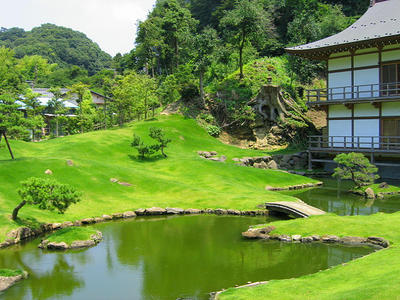 An hour beyond Tokyo’s choking concrete lies Kamakura, an ancient city and former capital. Sprinkled with 65 temples and 19 shrines, Kamakura’s shady side streets lead to cultural treasures…and the beach. I followed a circuit of the best known Zen temples, and paid homage to Diabutsu the Great Buddha, the third largest in the world. For 20 cents I climbed inside his hollow back, which felt like climbing into an oven. Cast of bronze in 1252, Buddha shrugged off a tidal wave in 1495 that swept away the wooden temple housing him. His meditation has remained uninterrupted despite being inundated with tourists. Sacrilege or early supper, down the street I slurped Buddha udon soup with ingredients cleverly arranged as Buddha’s face: egg yolk eyes, scallion hair, fish cake nose, and pink ginger mouth. Tasty and enlightening!
An hour beyond Tokyo’s choking concrete lies Kamakura, an ancient city and former capital. Sprinkled with 65 temples and 19 shrines, Kamakura’s shady side streets lead to cultural treasures…and the beach. I followed a circuit of the best known Zen temples, and paid homage to Diabutsu the Great Buddha, the third largest in the world. For 20 cents I climbed inside his hollow back, which felt like climbing into an oven. Cast of bronze in 1252, Buddha shrugged off a tidal wave in 1495 that swept away the wooden temple housing him. His meditation has remained uninterrupted despite being inundated with tourists. Sacrilege or early supper, down the street I slurped Buddha udon soup with ingredients cleverly arranged as Buddha’s face: egg yolk eyes, scallion hair, fish cake nose, and pink ginger mouth. Tasty and enlightening!
In between manicured gardens and tranquil temples, I battled the summer heat with two helpings of purple sweet potato ice cream.  It tasted better than you’d expect; however, I found something better than any flavor ice cream. Kakigori (shaved ice) is a refreshing Japanese sweet. A friendly retired Japanese couple treated me after a steep climb in the woods above Kencho-ji Temple. I had my kakigori flavored with green tea syrup, garnished with azuki (sweet red beans), and capped with a scoop of creamy vanilla ice cream. As the syrupy ice began to melt, I blended in the cream and red beans for heavenly refreshment. Although variations are available nationwide, this shop’s kakigori is worth a return trip to Kamakura.
It tasted better than you’d expect; however, I found something better than any flavor ice cream. Kakigori (shaved ice) is a refreshing Japanese sweet. A friendly retired Japanese couple treated me after a steep climb in the woods above Kencho-ji Temple. I had my kakigori flavored with green tea syrup, garnished with azuki (sweet red beans), and capped with a scoop of creamy vanilla ice cream. As the syrupy ice began to melt, I blended in the cream and red beans for heavenly refreshment. Although variations are available nationwide, this shop’s kakigori is worth a return trip to Kamakura.
After large helpings of culture and cuisine, I relaxed beachside at a café with a frosty beverage. Boarders rode waves while windsurfers zipped across Sagami Bay. Children flung wet sand at each other; older kids buried one of their own on the beach. Sunshine faded to dusk. I soaked up a seaside atmosphere that felt more like California than Japan, and frowned at the thought of returning to the current capital city.
See surf n’ shrine images from what I consider to be my finest day in Japan to date.
Posted by
ジェフリー
at
1:00 PM
2
comments
![]()
Labels: domestic travel


